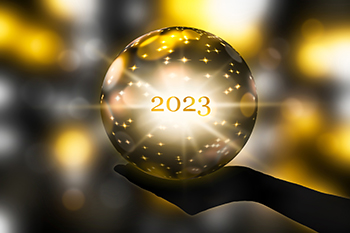You can’t talk about technology without addressing a growing problem that directly results from it: Cybersecurity. As more HVAC equipment and tools rely on Smart tech and the Internet of Things, the chances of breaches increase significantly.
Though the cybersecurity focus on commercial buildings is essential, the industry should also pay attention to residential homes. Look for more coverage of potential residential HVAC threat considerations and how to plan for the connected future throughout 2023 and beyond.
Sustainability and the Greening of America
The Green Wave continues washing over the U.S. with more efforts focused on energy and sustainability. This trend affects our industry in many ways. Again, several recent surveys find that more than 50% of HVAC customers will pay for more expensive, eco-friendly systems.
Look for energy prices to continue climbing throughout the year and as mentioned earlier, increasing prices for new HVAC equipment. Add to this the fact that with the newly implemented SEER2 energy efficiency standards, sustainable energy conservation becomes more important than ever. With that in mind, it may be worth looking into some eco-friendly offerings for your customers in the upcoming years.
Other trends include:
Electrification – In the AHR Expo 2023 Trend Report, Talbot Gee, CEO of HARDI, says, “The push to de-carbonize the U.S. economy is inextricably tied to grid and building electrification, and as a consequence, we’ve seen heat pump demand strengthen
significantly in recent years. Since 2017, air-source heat pumps have grown from 21 to 25% of HARDI distributors’ annual unitary sales.”
He adds that demand for gas-fired furnaces could drop if electrification takes root. “We have already seen an annual rate of heat pump shipments exceed furnace shipments,” Gee says.
De-carbonization – Also in the AHR Trend Report, David Budzinski, VP and general manager of Johnson Controls’ residential and light commercial divisions, says, “The push toward decarbonization and electrification is accelerating, driven by climate change, the insecurity of world energy supplies and new legislation, like the Inflation Reduction Act.”
One Final Thought – Workforce Development
Workforce development remains a nagging issue for the overall HVAC Industry. While the Green Wave pushes America further toward sustainable net-zero energy use and environmental conservatism, the Grey Wave pushes Baby Boomer workers and managers into retirement, leaving great chasms in the HVAC workforce across all the value chains.
The industry must get better at attracting young people, veterans, women, and minorities into the HVAC trade. The collective mindset must move away from the current hit-or-miss recruitment tactics and rules-of-thumb training approaches. As an industry, we must focus on field testing and measuring entire systems, including the ductwork, to ensure consumers achieve the efficiency and comfort they want and deserve. Every member of the HVAC supply chain must be responsible for improving training and using it to attract younger people who love it.

Measuring goes beyond the numbers. It also includes interpretation of those numbers and communicating them to customers in easy-to-understand language that helps them in their purchase decision-making. To quote the late Rob Falke of National Comfort Institute, “If you’re not measuring, you’re just guessing.”
Since more consumers are willing to pay higher prices for eco-friendly systems, this is a golden opportunity for High-Performance HVAC Contractors.
2023 Looking Good
Overall, 2023 is poised to be a huge year for the HVAC industry, with the central issue in meeting the increasing demand for products and services across the nation. Creativity, communication, and the willingness to test every service and installation project can help you set your business ahead of competitors and meet customers’ demands.
And, oh yes, you must charge the correct prices to continue successfully serving your customers in 2023 and beyond.













Recent Comments